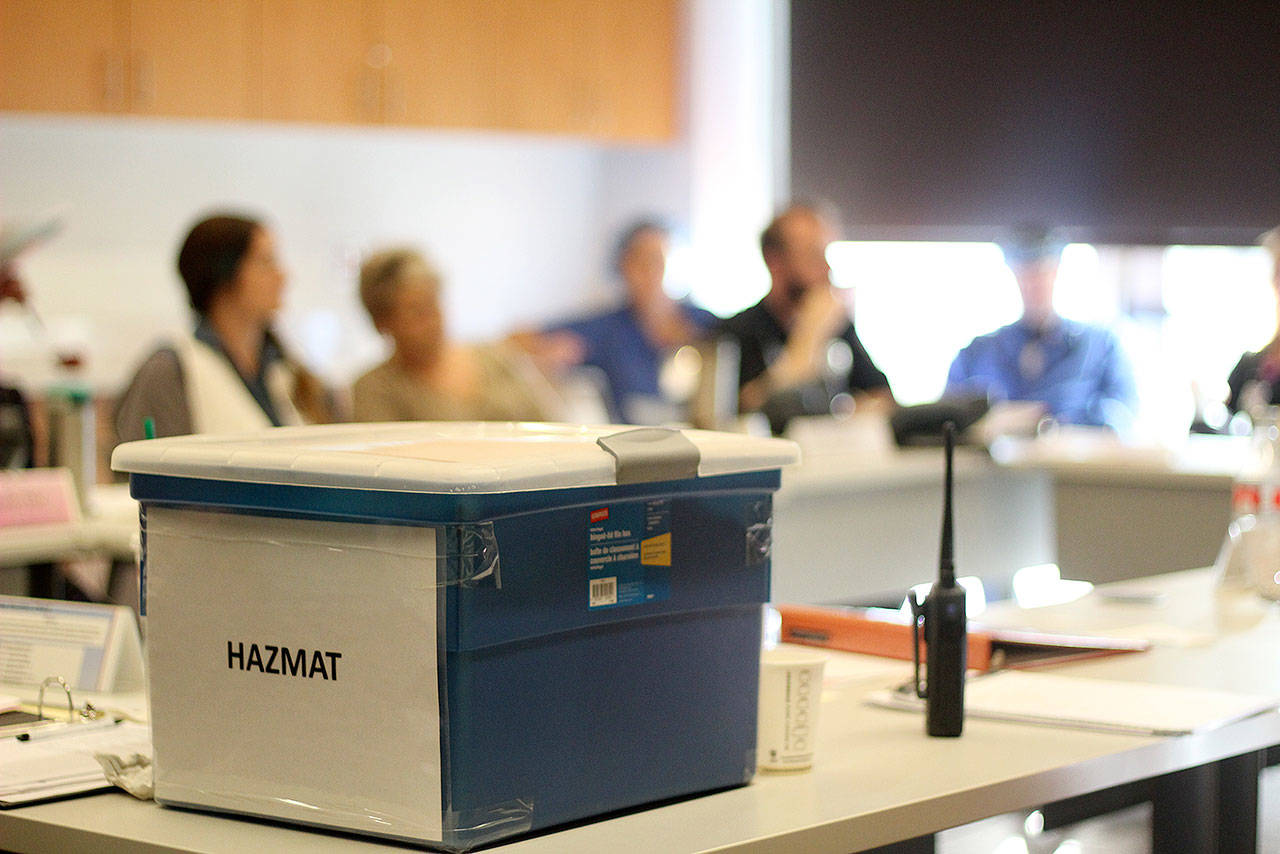A dangerous chemical, an overwhelming number of patients, and a power outage complicating the whole situation.
No, you didn’t miss a massive news story — this was the scenario St. Elizabeth Hospital constructed to test its emergency preparedness.
It’s a bi-annual requirement for CHI Franciscan hospitals to test themselves in various disaster or emergency situations, said Kyle Jacobson, an emergency management specialist with the health care system and an Enumclaw City Councilman.
“This one was based on an accidental chemical release. A plausible drill of an accidental chemical drill to test our ability to decontaminate patients prior to their reception of treatment or as a process of their treatment,” Jacobson said. “The last time this drill was done here was several years ago, so it was time for us to make sure we still had the capabilities we thought we did.”
The chemical “used” in this drill, which was done the morning of Nov. 20, was Anhydrous Ammonia, a highly effective plant fertilizer that is also extremely dangerous to people. According to the National Agriculture Safety Database, Anhydrous Ammonia has no water, which means when it comes into contact with liquid, they combine quickly. For plants, that means releasing liquid ammonia into the soil, great for plant growth; for people, that means dehydration, cell destruction, and severe chemical burns.
“Victims exposed to even small amounts of ammonia require immediate treatment to avoid permanent injury,” the National Agriculture Safety Database website reads, including total blindness, serious lung damage, burns and blisters even after only a few seconds of exposure, and, at high enough volumes, death by suffocation.
Of course, no one was exposed to any dangerous chemicals. Instead, Jacobson dusted dummies with glow powder to simulate Anhydrous Ammonia so he could track how well patients were decontaminated.
But that wasn’t the only challenge St. Elizabeth staff had to deal with.
“We felt that it was a good idea to prepare for a utility failure right before the winter months, so we simulated a power outage, talked them through what problems we could encounter,” Jacobson said. “The second part was recognizing patients were contaminated and keeping our staff safe while not hindering patient care.”
Additionally, staff had to admit 24 patients in one hour, “which is extremely high for this hospital,” he continued. “That tests our ability to treat a mass-care situation.”
If this scenario is starting to look impossible to pull off perfectly, that’s because it’s designed that way.
“Regulators that look at these do not want us to succeed in our drills,” Jacobson said. “We’re supposed to plan them to be very difficult and expose any gaps.”
First, staff were not told what sort of emergency they’d be dealing with in order to simulate a no-notice situation, so they had to be prepared to take in patients and treat them by the various “symptoms” staff observed, rather than being prepared for a specific chemical.
Fortunately, that did little to throw them.
“They were extremely effective at getting patients decontaminated,” Jacobson said. “We achieved our goals in the mission, but we did find areas where we think we could improve our processes to be better in the future.”
Staging was a particular place where the St. Elizabeth team showed they could improve. For example, they were initially unable to find the scrub brushes used to decontaminate patients.
Jacobson also mentioned their communication strategy could be bolstered.
“We were using radio systems that we hadn’t fully tested, and we tested them past what we normally test them, and we found some gaps we can fill in,” he said.
But all in all, Jacobson said he’s more than satisfied with how well hospital staff, as well as the Enumclaw police and firefighters who were involved, performed.
“St. Elizabeth did a fantastic job, and I’m extremely proud of their leadership staff here for how they performed today,” he said. “I can honestly say I feel safe being here.”
But Jacobson also stressed that communities can’t just rely on their local institutions, be they a hospital, police or fire departments, when it comes to emergencies.
“Communities experience disasters together, so relying on each other and making sure that everyone understands to be personally prepared for a disaster is vitally important to my job,” he continued. “If the community itself is more resilient, it will always be better.”


